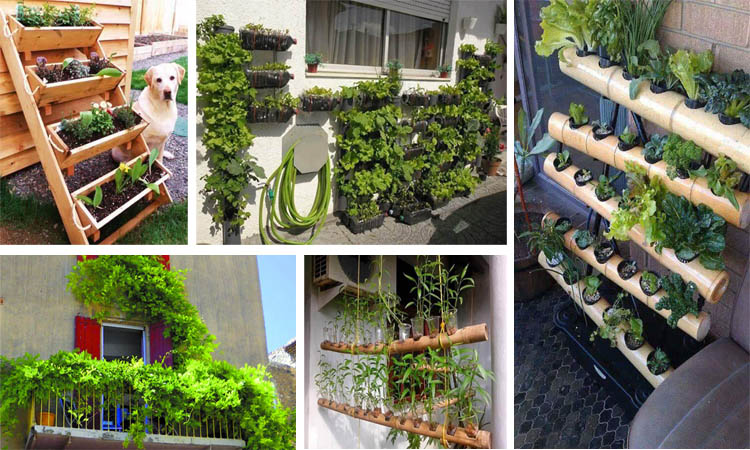To help you decide what kind of structure to use for your vertical garden, consider these practical design tips:
Enjoy this useful tips !!!
-
Permanency of the structure of vertical gardens: Are you renting? Does your garden get only limited sun? Do you have mobility or access challenges? Then you may need to consider how permanent your vertical structures really need to be. Choose lightweight materials that are easily removed when they have done their job or can be moved around and easily repositioned to catch the sun during the day.
Image 1
2. Check the shade factor: Depending on where you position your plants, as they grow upwards they may block sunlight from reaching plants behind or below them. Place vertical structures such as teepees and arbors where you need to shade understudy plants otherwise if they don’t get enough sun, they may suffer. Some plants love shade or can tolerate semi-shade so take advantage of these spaces by planting vegetables like spinach or lettuce especially in the warmer months.
3. Choose your plant wisely: If you are growing a vine or creeper up a trellis to create more shade or privacy, consider what kind of plant you grow and whether you will need access for pruning as it matures. If so, how easy is it to reach the top of the trellis or structure if you need to give your living wall a haircut? Read the plant label so you choose a species that will grow to a suitable height and provide you with the screen you need without creating future work for you.
4. Height and strength of the structure: Don’t knock yourself out! Position hanging baskets or upside down planters where you won’t knock your head as you walk past and check there is adequate support for their weight. Avoid hanging them too high or they will be difficult to water and maintain. If you don’t have any other option, invest in a pulley system so you can lower and raise your planter.
5.Window boxes and hanging planters: As these are often positioned overhead, for safety reasons make sure they are securely attached! Avoid heavyweight materials and use light plastic or wire instead, or install around the perimeter of the structure where the building has been engineered to have the greatest strength. Window boxes are usually long and narrow and as with hanging baskets, tend to only hold a small amount of soil so are best used for seasonal displays or refreshed regularly.
6. Take care of invasive plants: Be careful growing plants with adhesive pad-type tendrils as they can quickly become invasive and will stick to just about any surface. Planted too close to building walls, they can damage paintwork, timber, mortar and other exterior materials.
7.Mature plant height: Consider the maximum height the plant is likely to grow when it is mature. This will have an impact on what kind of structure you choose and affect accessibility for watering, fertilizing, pruning and maintenance. Consider how high you can comfortably reach!
8. Make the best use of vertical structures: Avoid wasting walls and fences that provide you with blank canvases for growing or displaying garden art. If you can’t drill into the front of a fence or gate, try hanging hooks with planters over the top. Likewise, artwork and signs can be attached with a little creative inspiration.
9.Extra thirsty: Depending on the location of your vertical garden, plants that are not planted in the ground and are exposed to more sun and the wind can need a drink more often. They may be vulnerable to wider fluctuations in temperature too. Add extra mulch to compensate, water wisely and choose your plant species carefully.
10.Structure before planting: Make sure you erect or install your vertical support structure before planting to avoid root damage once plants have started to grow.
Save
Save

